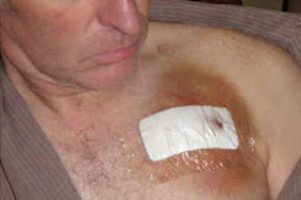
Doctor Group To Monitor Defibrillator Leads. Defibrillator lead wires, such a those involved in the 2007 Medtronic Sprint Fidelis lead recall, need better surveillance to detect defects, a group of heart doctors has said. The Heart Rhythm Society also called on hospitals to train doctors in the delicate procedure of removing such wires from patients. […]

Doctor Group To Monitor Defibrillator Leads. Defibrillator lead wires, such a those involved in the 2007 Medtronic Sprint Fidelis lead recall, need better surveillance to detect defects, a group of heart doctors has said. The Heart Rhythm Society also called on hospitals to train doctors in the delicate procedure of removing such wires from patients.
A lead is a wire that connects an implantable defibrillator to the heart. If a lead breaks, the defibrillator can emit a massive and painful shock. And in the worse case scenario, the fractured lead can prevent a defibrillator from sending a necessary, lifesaving shock to the heart.
Medtronic Inc.’s Sprint Fidelis lead was removed from the market in October 2007, following reports of 5 deaths due to lead fractures. As we reported in March, Medtronic recently sent a letter to doctors informing them that the faulty wires were a “possible or likely contributing factor” in as many as 13 deaths. Four of the deaths occurred when doctors tried to remove defective Sprint Fidelis leads from patients.
Before the recall, Sprint Fidelis leads had been implanted with 90% of Medtronic’s defibrillators. According to the Wall Street Journal, 268,000 defective Sprint Fidelis leads had been implanted worldwide, and about 235,000 people still had these leads in their chests when the recall was issued.
According to The New York Times, around 150,000 people are still implanted with a Sprint Fidelis lead.
Replacing a lead is not an easy procedure, as the invasive surgery can cause the tissue of the blood vessels and heart to tear.
In fact, replacing a defibrillator lead is so risky that patients with Sprint Fidelis leads were told to leave the defective components in place unless they fracture.
The Heart Rhythm Society, meeting in Boston this week, pointed to the Sprint Fidelis recall in its call for a surveillance system to track lead performance in order to spot defective devices earlier.
According to Reuters.com, the group’s new policy guidelines cover pre-market evaluation and post-market monitoring of the devices, the threshold for action and communication after abnormal lead performance is identified.
According to the Associated Press, the group also said hospitals need to train more doctors to remove faulty defibrillator leads. They said physicians should perform at least 40 extractions under expert supervision before operating on their own. Supervising physicians should have performed at least 75 extractions with a high rate of success, the group states.
They also recommended that such training take place only medical centers that perform a large number of lead extractions each year should train physicians to perform the surgery.
The Heart Rhythm Society also called for tracking the success and failure rates of removal procedures in a national database to give physicians a clearer picture of best practices for the difficult procedures, the Associated Press said.
Finally, the Associated Press said the group called on the Food & Drug Administration (FDA) to require that new defibrillator leads be tested in humans before they are approved.
Currently, most leads are approved through the agency’s fast track process, which is reserved for devices that are considered modifications of existing products. The fast track process does not require human studies.
The personal injury attorneys at Parker Waichman LLP offer free, no-obligation case evaluations. For more information, fill out our online contact form or call 1-800-YOURLAWYER (1-800-968-7529).


